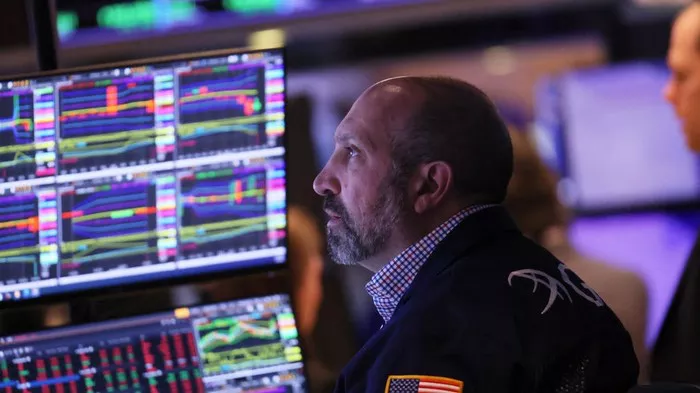Stock futures, a critical component of the financial markets, play a pivotal role in shaping investor sentiment and influencing market behavior. Traders and investors closely monitor stock futures as they offer valuable insights into the market’s future direction. A rise in stock futures is often seen as a positive signal, but it’s essential to understand what this means and how it impacts financial markets.
Understanding Stock Futures
Stock futures are financial derivatives contracts that obligate the holder to buy or sell a specified quantity of shares of a particular stock at a predetermined price and date in the future. These contracts are traded on organized exchanges and serve several purposes, including hedging against price fluctuations, speculating on future price movements, and facilitating efficient price discovery in the market.
The Meaning of a Rise in Stock Futures
When we talk about a “rise” in stock futures, we are referring to an increase in the futures contract‘s price. The price of a stock futures contract is a reflection of the expected future price of the underlying stock. Therefore, a rise in stock futures indicates that market participants expect the stock’s price to increase between the current date and the contract’s expiration date.
Causes of a Rise in Stock Futures
Several factors can contribute to a rise in stock futures. Understanding these factors is essential for interpreting what such a rise means:
Market Optimism: A positive economic outlook, strong corporate earnings, and other favorable economic indicators can lead to increased optimism among investors. This can result in higher demand for stocks, driving up the prices of stock futures.
Corporate Earnings: Strong earnings reports from companies can significantly impact stock futures. Companies that exceed revenue and profit expectations often experience a boost in their stock prices, which is reflected in the corresponding futures contracts.
Economic Data: Economic data, such as employment reports, GDP growth, and consumer sentiment, can influence the direction of stock futures. Positive economic data may encourage investors to believe that the economy is on solid footing, leading to higher stock futures prices.
Federal Reserve Actions: Central bank policies, especially those of the Federal Reserve in the United States, can have a profound impact on stock futures. Changes in interest rates and other monetary policies can sway market sentiment.
Global Events: Geopolitical events, trade tensions, and international developments can all impact stock futures. Positive resolutions to these issues can lead to optimism in the markets, resulting in a rise in stock futures.
Interpreting a Rise in Stock Futures
A rise in stock futures is generally perceived as a positive sign by market participants, as it suggests that investors expect higher stock prices in the future. However, interpreting this rise requires careful consideration of the broader financial landscape and context. Here are some key points to keep in mind when assessing the significance of a rise in stock futures:
Market Sentiment: A rise in stock futures reflects current market sentiment, but this sentiment can change rapidly. Traders and investors should be aware that futures prices are influenced by a wide range of factors, including news events, geopolitical developments, and economic data releases.
Short-Term vs. Long-Term: A rise in stock futures may indicate short-term optimism but may not necessarily predict long-term trends. It’s essential to assess whether the factors driving the increase are likely to be sustained.
Volatility: Volatility in the futures market can impact stock futures prices. Sudden market fluctuations and high levels of uncertainty can lead to sharp rises and falls in futures prices.
Hedging and Speculation: It’s crucial to consider the motives behind trading in stock futures. Some market participants use futures for hedging against potential losses, while others use them for speculative purposes. Understanding the mix of hedging and speculative activity is important for interpreting futures movements.
Impact on Financial Markets
A rise in stock futures can have significant consequences for financial markets, influencing a range of asset classes and investment strategies:
Equity Markets: A rise in stock futures typically translates into higher stock prices in the underlying equity markets. This can boost investor confidence, leading to increased trading activity and potentially driving up the values of individual stocks.
Options Market: Options traders often use stock futures prices as a reference point for their strategies. A rise in stock futures can affect the pricing and strategies of options contracts.
Interest Rates: Changes in stock futures can indirectly impact interest rates. If stock futures rise due to optimistic economic conditions, it may affect the Federal Reserve’s stance on monetary policy, potentially leading to adjustments in interest rates.
Currency Markets: The value of a country’s currency can be influenced by the stock futures market, particularly if a rise in stock futures reflects improved economic conditions. A stronger economy can lead to a stronger currency.
Commodities Markets: Commodity prices can also be affected by a rise in stock futures, as it can signal increased demand for raw materials and resources.
Conclusion
In conclusion, a rise in stock futures is a critical indicator in the world of finance. It reflects market optimism and expectations of higher stock prices in the future. However, understanding what this rise means requires a comprehensive understanding of the factors at play and a cautious approach to interpretation. Traders and investors should consider the broader financial landscape, market sentiment, and the motives behind trading in stock futures when assessing the implications of this rise. As stock futures continue to be a vital component of global financial markets, their movements will remain closely watched and analyzed by market participants, economists, and policymakers.


